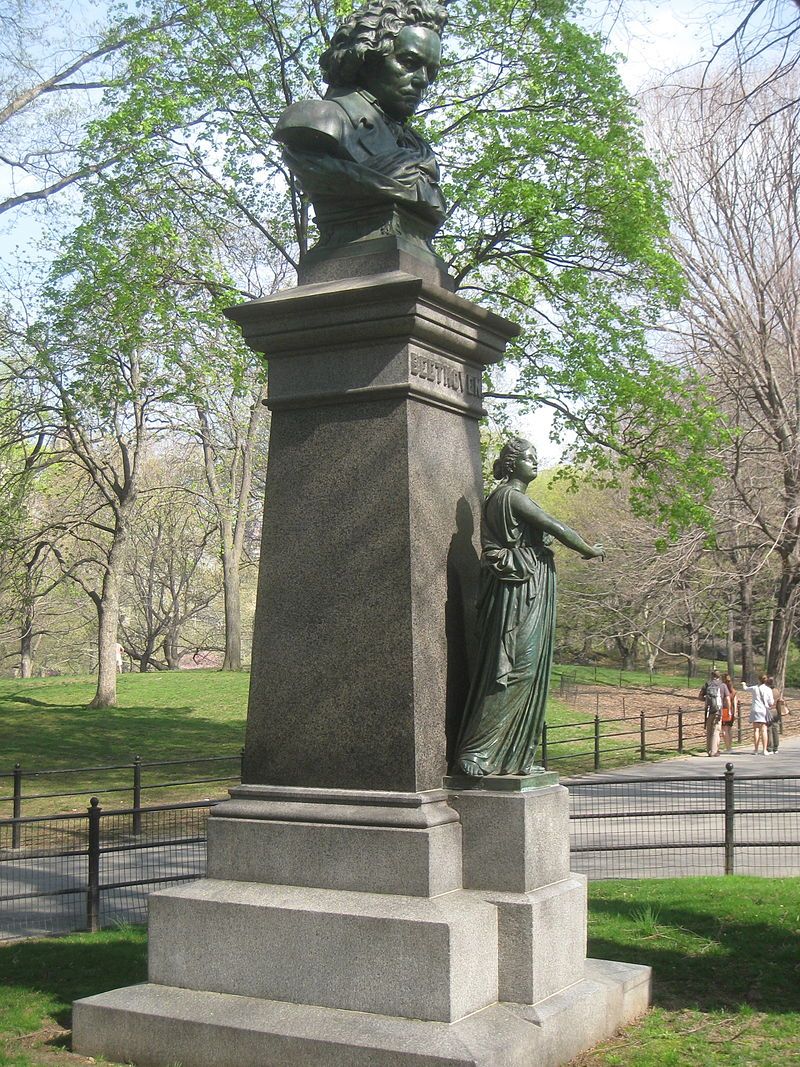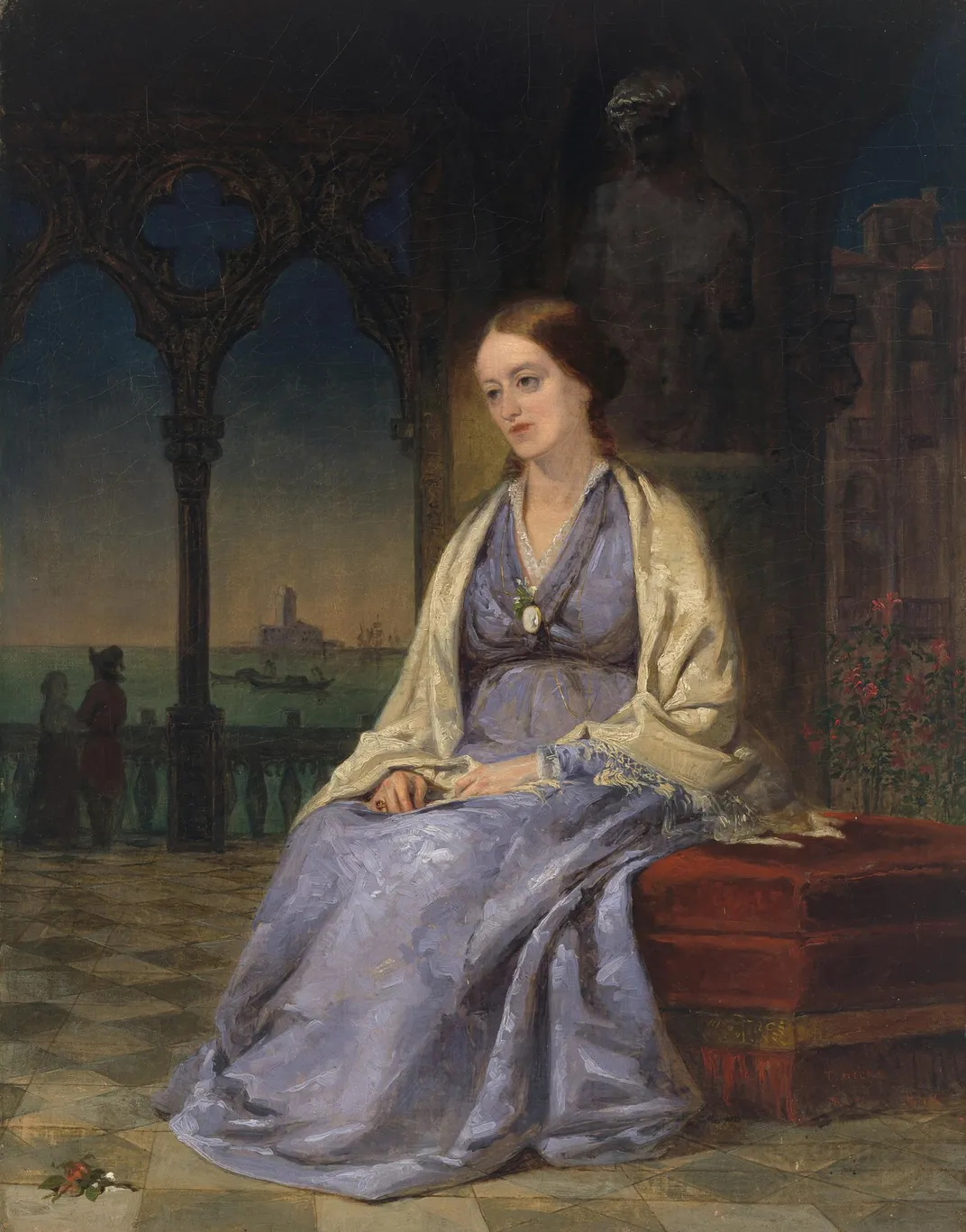How Young America Came to Love Beethoven
On the 250th anniversary of the famous composer’s birth, the story of how his music first took hold across the Atlantic
:focal(634x383:635x384)/https://tf-cmsv2-smithsonianmag-media.s3.amazonaws.com/filer/3d/e0/3de096a2-5f45-45bb-8332-27a70ad02aff/beethoven_portrait.jpg)
On April 10, 1805, in honor of the Christian Holy Week, a German immigrant and conductor named Jacob Eckhard organized a special concert for the gentry of Charleston, South Carolina. The performance opened with a “grand overture” by Ludwig van Beethoven—likely the first movement of Beethoven’s First Symphony, which the composer had debuted in Europe just five years earlier.
His music, characterized by great swells of emotion and technical difficulty, would have been cutting-edge for the time. “[Beethoven] wasn’t the famous composer that we think of now. He was young and upcoming, an upstart kind of person,” says Michael Broyles, a professor of musicology at Florida State University and author of the 2011 book Beethoven in America.
Such obscurity might seem unimaginable today as the world commemorates the 250th anniversary of his birth. In truth, fervor around his music wouldn’t fully take off in the United States until after Beethoven died in 1827, and it would take major nationwide shifts in how music was consumed, and in technology and demography—not to mention the effusive praise of a few key admirers—to boost the composer’s profile in the young, rapidly growing country.
Beethoven’s music and legacy has since permeated American culture. In comics, Hollywood films, the writings of African American and feminist scholars, during wartime, and in rock’n’roll songs, Beethoven’s influence proves inescapable.
Born in December 1770 in Bonn, Germany, Beethoven spent most of his adult life in Vienna, where his stunning symphonies and personal tragedy had made him a celebrity at the time of his death in 1827. Some accounts indicate that 10,000—or even 30,000—attended his funeral march. Depictions of the scene show throngs of people gathering in carriages and on foot, decked in their finery and hustling to glimpse the procession.
But his cultural ascendancy in America was far from a foregone conclusion. As historian Ann Ostendorf has written, a number of music cultures coexisted in colonial America, from the music of enslaved Africans, the many types of Native American music and the hymns sung in church congregations. As European colonizers settled and amassed wealth, they began to slowly establish centers for the music of their home countries by creating societies, which supported the incomes of musicians through benefit concerts.
Beethoven himself never traveled to the United States, and it’s hard to know for certain when his music first arrived on American shores. Performances of his work during the composer’s lifetime were scattered, and usually tied to wealth, Broyles notes. The 1805 Charleston performance, which Broyles believes to be the earliest of Beethoven’s work in the nascent United States, followed this trend.
A port city, the South Carolina city’s status as a hub for the rice trade and an epicenter for the enslavement and sale of people had made it home to some of the wealthiest men in the country.
Decades prior, these gentlemen founded the St. Cecilia Society, a music society based on similar entities in Europe. Many of these men—and membership was exclusively limited to men, with women only allowed to attend concerts as guests—had doubtless made their fortunes, in part, through the enslavement of Africans. “In one sense, then, Beethoven arrived in America on the backs of African slaves,” Broyles writes in Beethoven in America.
The 1805 concert would have looked and sounded remarkably different from what we imagine today, says Bradley Strauchen-Scherer, curator of musical instruments at the Metropolitan Museum of Art. Unlike modern instruments, which have been exquisitely crafted to sound smooth and homogenous, 19th-century period instruments sounded “sort of like handloomed, nubby silk,” the curator says.
“Musicologists will often describe the musical world before Beethoven … as event-orientated,” Strauchen-Scherer explains. Concerts were for celebrating specific occasions, and music was not considered high art—for instance, Broyles notes that the Charleston program lists a “potpourri” of performers alongside a rendition of Beethoven’s music that included amateur musicians as well as professionals.

But the landscape of America changed rapidly in these years, and so, too, did the landscape of classical music. An influx of German immigrants in the late 1840s brought passion for Beethoven and printed scores of his music across the Atlantic. Traveling groups of European virtuosos took advantage of an ever-expanding network of railroads to crisscross the country, bringing classical arrangements to major cities across the nation.
The establishment of two concert halls in the middle of the century further advanced the composer’s popularity: the Boston Academy of Music in 1833 and the New York Philharmonic in 1842. In the decades just following Beethoven’s death, these organizations performed Beethoven on repeat: In Boston through the 1840s, for instance, his Fifth and Sixth symphonies were played more than any other compositions, Broyles found.
These performances marked a sea-change in music history. Previously, performing the work of a recently deceased composer would have been unthinkable, notes Strauchen-Scherer. “Certainly, pre-Beethoven, the idea of performing any music where the composer wasn't alive, was a minority pursuit,” she says.
“And that the idea that you listen to the same composition over and over again in this very focused way—Beethoven really ushers in that era,” she adds.
The “sheer emotional power” of Beethoven’s scores—however long or difficult—struck a chord with audiences, Broyles says. And among the most vocal and enthusiastic supporters of Beethoven in America were Transcendentalist writers Margaret Fuller and John S. Dwight.

Fuller attended the first concert of Beethoven’s Fifth Symphony in Boston on April 3, 1841. Two days later, she recounted the concert in breathless detail in a letter to her friend, Unitarian minister and philosopher William Henry Channing.
“Oh William, what majesty, what depth, what tearful sweetness of the human heart, what triumph of the Angel mind! […] Into his hands he drew all the forces of sound, then poured them forth in tides such as ocean knows not […] When I heard this symphony I said I will triumph more and more above the deepenin[g] abysses.”
Dwight, too, was profoundly moved by the performance. Decades later in a study of Boston’s music history, the minister would write that “the first great awakening of the musical instinct here was when the C-minor Symphony of Beethoven was played.” Fuller went on to write extensively about Beethoven in The Dial, the Transcendentalist journal that she edited.
These writers and their contemporaries were likely attracted to the Romantic themes embedded in Beethoven’s symphonies, which evoked grand emotional sagas. Although Beethoven himself was not a Romantic, his music came to embody the 19th-century ideal of the genre—such as in his Sixth “Pastoral” Symphony, which evoked the sounds of nature in a way that would have appealed to the Transcendentalists, who perceived spirituality as closely tied to the natural world, Broyles says.
Beethoven also provided fodder for another popular trope of the nineteenth century: “The mythology around Beethoven is all about the mid-19th-century cult of the lone genius,” says Strauchen-Scherer. In 1842, Fuller reviewed the Fifth Symphony concert in the Dial and compared the composer to Shakespeare—another European “genius” gaining traction in America at the time.
In their enthusiastic reviews, Fuller, Dwight and their contemporaries also helped to elevate music in American thought as an art form on par with painting or literature—what musicologists call the process of “sacralization,” Broyles says.
The story of how Americans came to love Beethoven explains how contemporary attitudes about Beethoven and classical music developed, says Broyles. “Classical music became something with spiritual or moral value,” he adds. “[Beethoven] changed how Americans thought about music.”
/https://tf-cmsv2-smithsonianmag-media.s3.amazonaws.com/accounts/headshot/nora.png)
/https://tf-cmsv2-smithsonianmag-media.s3.amazonaws.com/accounts/headshot/nora.png)